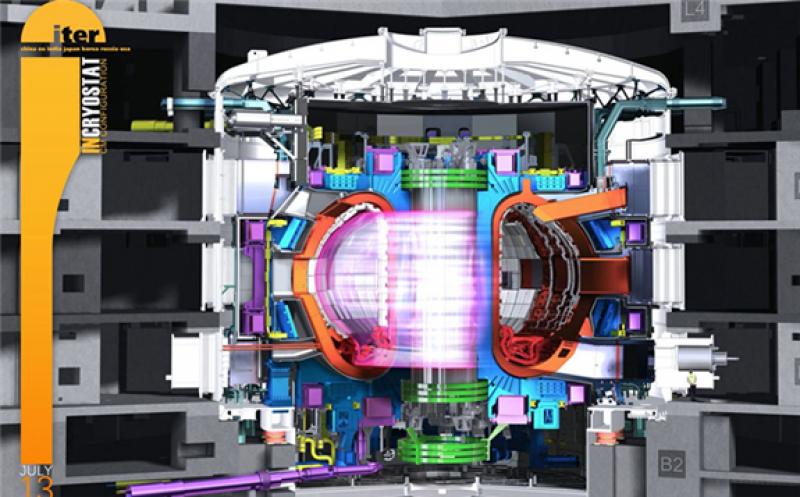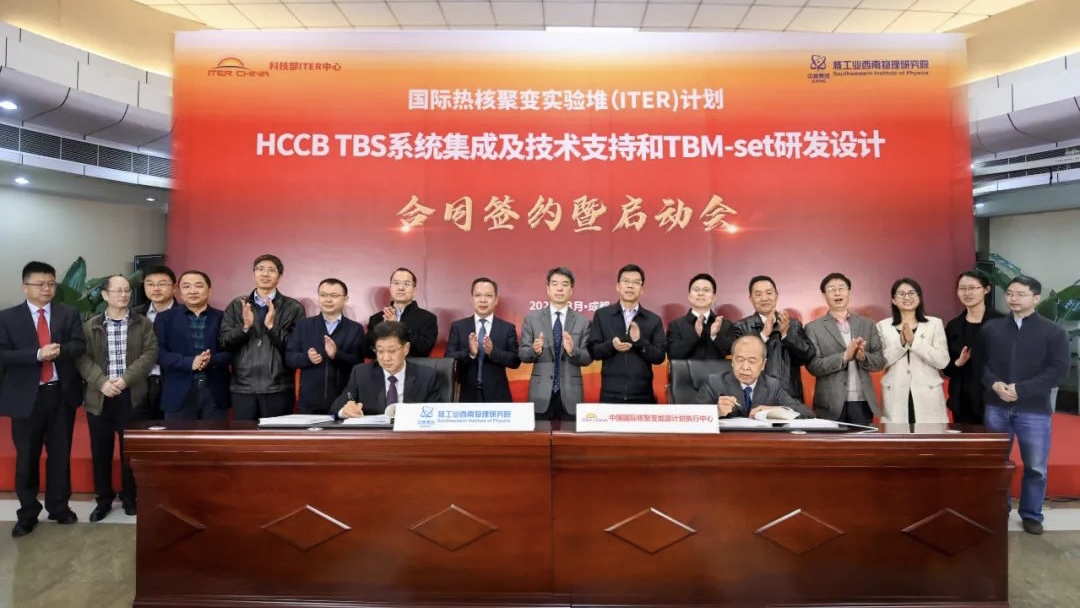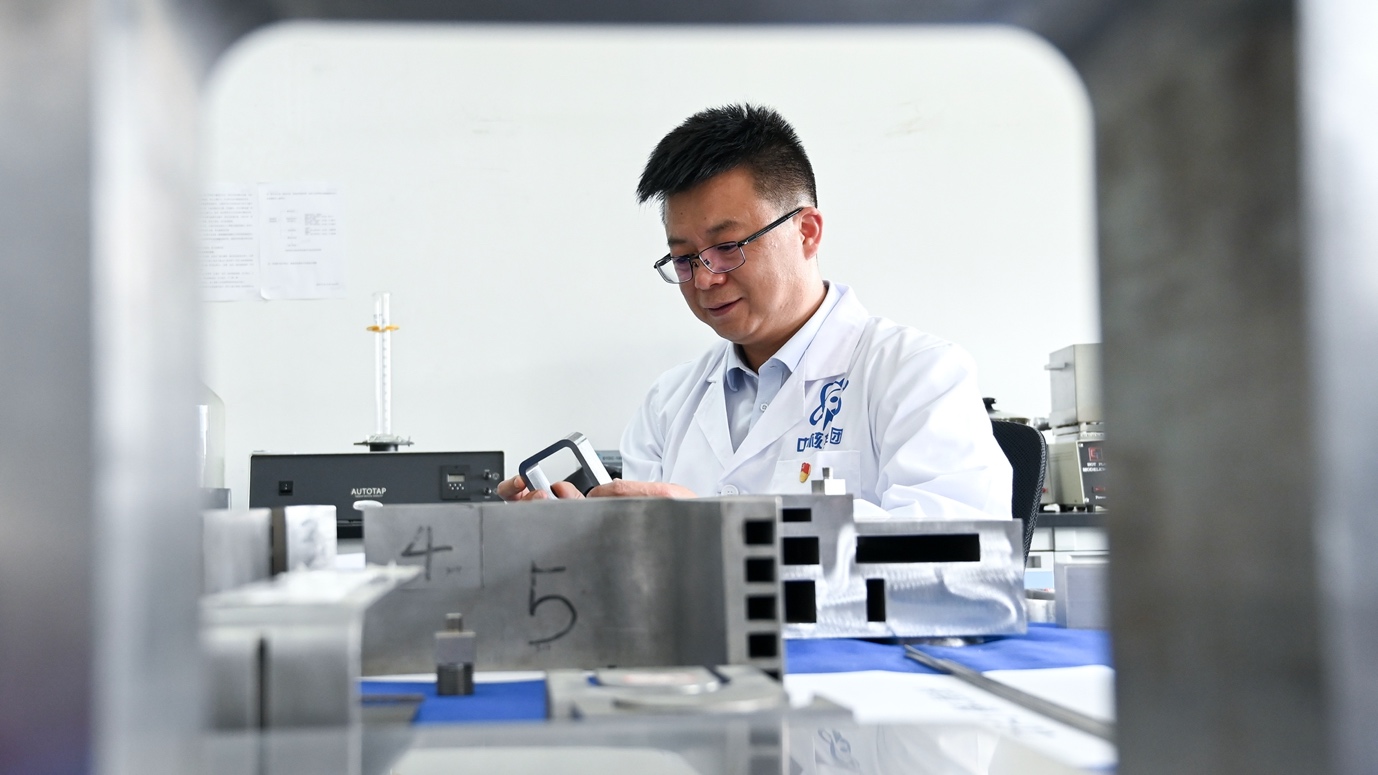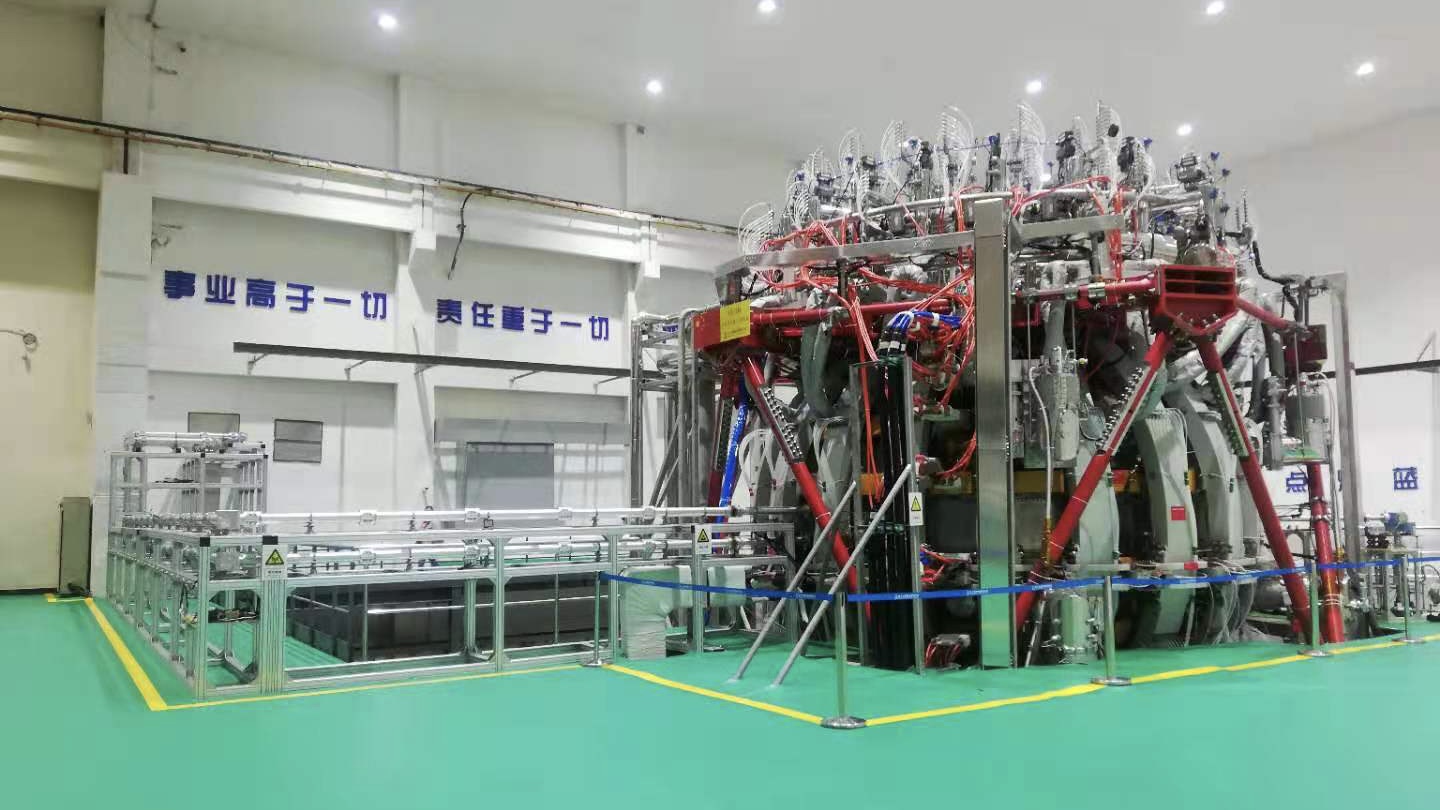
The project, called Helium-Cooled Ceramic Breeder Test Blanket System (HCCB-TBS), is a crucial part of the "artificial sun" project, or the International Thermonuclear Experimental Reactor (ITER) at Cadarache in southern France.
Researchers say the TBS is designed to verify "tritium breeding" blanket technologies – the core for tritium self-sufficiency and the future needs of a large-scale fusion power plant. The SWIP told CGTN that the first batch of TBS components will be delivered to the ITER in 2029.

Currently, nuclear power plants use nuclear fission reaction, in which the nucleus of an atom splits into smaller parts, to generate electricity. For nuclear fusion, however, it happens when two or more atomic nuclei collide at a very high energy and fuse together into a new nucleus. It releases an energy density many times greater than nuclear fission.
The ITER project will use tritium and deuterium, two isotopes of hydrogen, to fuel its fusion reaction. "While deuterium can be extracted from seawater in virtually boundless quantities, the supply of available tritium is limited, estimated currently at 20 kilograms," the ITER explained.
According to Wang Xiaoyu, head of the HCCB-TBS project, a second source of tritium exists: tritium can be produced within the tokamak, a donut-shaped reactor, when neutrons escaping the plasma interact with a specific element – lithium – contained in the blanket. "Now, fusion scientists have come up with the idea of using tritium breeding blanket to produce tritium and generate electricity in a fusion reactor," Wang explained.

The HCCB-TBS project is part of China's involvement in the research and designing of the ITER, which was launched in 2006 in France. So far, it has involved scientists from 35 countries, including China, the U.S., Russia, Japan, South Korea and India.
Its purpose is to test whether nuclear fusion can be used to produce near-limitless clean energy. In practice, it uses a tokamak to heat plasma to 150 million degrees Celsius, 10 times hotter than the sun's core. As the process resembles the atomic reaction that powers the sun, it's commonly known as the "artificial sun" project. Its first phase of operational test is scheduled for 2025, with full operation slated for 2035.
The SWIP, affiliated to the China National Nuclear Corporation (CNNC), is one of the main supporting institutes to supply procurement packages to the ITER. Over the decades, it has worked with domestic partners to implement design and R&D, and develop Reduced Activation Ferritic/Martensitic Steel (RAFM), functional materials as well as the fabricating process of key components, all of which have helped verify the feasibility of China's HCCB-TBS project.

In December 2020, the SWIP commissioned China's new-generation of the "artificial sun," known as the HL-2M Tokamak, and achieved its first plasma discharge. It's able to generate plasma hotter than 150 million degrees Celsius, and is expected to greatly enhance the research and development of key technologies in plasma physics research in China.
Luo Delong, head of China International Nuclear Fusion Energy Program Execution Center, told CGTN the successful launch of the HCCB-TBS project will lay a solid foundation for its future manufacturing, delivery and test operations on the ITER equipment. "If it succeeds, power generation through fusion will help address all existing problems of energy supplies for the human kind, in a safer and more environmentally friendly way," he added.
This article is reproduced at news.cgtn.com